Nam Dinh: High prices of raw materials, COVID-19 outbreak, but the canal project connecting Day River - Ninh Co is forced to finish on time after more than two and a half years of construction.
At noon in July 2023, looking at cargo ships following each other through the canal connecting the Day River - Ninh Co in Nghia Hung District (Nam Dinh), Mr. Duong Thanh Hung, Director of the Waterway Project Management Board, who directly directed the project, recalled the more than two and a half years of construction with a lot of pressure.
"At many times, looking at the workload and the closing date of the agreement with the World Bank, many people thought the project could not be completed on time," said Mr. Hung, adding that the project has an investment capital of 107 million USD (about 2,500 billion VND), of which the ODA loan from the World Bank is more than 78 million USD, and the Government's counterpart capital is over 28 million USD. The loan from the World Bank alone requires the project to be completed before June 30, 2023.
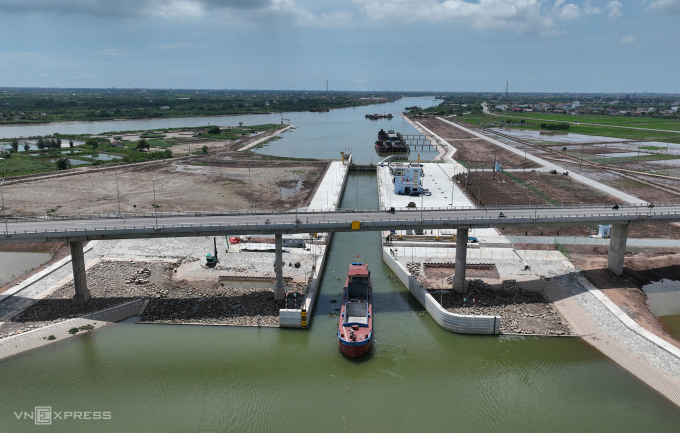
The canal connecting the Day River and Ninh Co River has come into operation. Photo: Ngoc Thanh
The idea of building a canal connecting the Day River and Ninh Co River was studied since 1980 but was delayed for many years due to lack of capital. In 2013, the project could be built at the same time as the renovation of Lach Giang estuary (located at the end of the Ninh Co River). However, the price of construction materials fluctuated greatly, forcing the Government to restructure the project and divide the investment into phases. Accordingly, Lach Giang estuary was focused on renovation first to create a premise for the development of river and sea vessels with a load capacity of over 1,000 tons to 3,000 tons. The construction of the Day - Ninh Co canal cluster was once again postponed.
Six years later, the Day - Ninh Co river canal project was restarted after the World Bank arranged medium-term capital.
Mr. Hung recalled that at the time of budget approval, the prices of materials and fuel were the lowest in many years. But when the project started at the end of 2020, prices increased very high, especially steel prices, while the contract signed with the World Bank stipulated that prices could not be adjusted.
"Just looking at the work, I saw the loss," Mr. Hung said, adding that contractors saw the loss, leading to a mentality of slow construction. To solve the problem, at times the Waterway Project Management Board was forced to guarantee contractors to buy materials and rent construction equipment on credit.
After the price storm, the project was also significantly affected by the COVID-19 pandemic. Nam Dinh province did not accept people from localities that were practicing social distancing, causing most of the contractor's and project management unit's personnel to be unable to access the construction site.

Mr. Hung shares the difficulties in building the canal. Photo: Ngoc Thanh
But things did not stop there. The area where the canal was built was the closest point between the two rivers, with complex geological changes, weak soil, and many underground water sources. Also in this area, the French had dug a canal, but after the excavation, it collapsed.
From July to October 2021, the rain and accumulated rainfall were unusually high compared to the previous year, making the already weak ground where the canal was built even weaker. Many places had just been dug and had not yet been paved before they collapsed, in some places 6-7 times.
The rains cause the ground to become waterlogged, causing landslides to sweep away a lot of equipment. After each rain, it takes at least 3-5 days to pump out all the water, clean the mud in the construction pit, and wait for the road to dry before continuing construction. In fact, the total construction time of a year is only about 7 months.
"There were times during the three-month rainy season when we could do almost nothing but pump water out of the foundation pits to keep machinery and equipment from flooding," said Mr. Hung.
To avoid landslides, the construction of the items had to take place simultaneously and use a large number of workers. Cement mixed with soil was also pumped into many areas for reinforcement. The contractor had to change the construction solution such as piling, the initial estimated volume of excavated soil was only about 800,000 m3, but in reality, it had to be dug twice as much.
"The construction area is narrow, while many items have to be carried out at the same time. Normally, if each item is constructed, it would take about 5 years, but to compete, the bid packages have to compete for space," said Mr. Hung.
In order to minimize the cost, the project also used excavated soil to build the dike instead of buying it. The soil for building the dike must be dry, so during the excavation process, good soil was selected to dry.
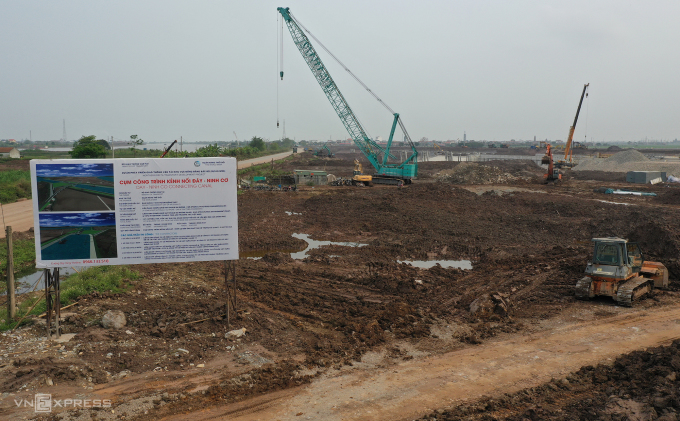
Construction work is in disarray as the World Bank agreement nears its closing date. Photo: Ngoc Thanh
In November 2021, a landslide incident led to the demolition and reconstruction of two bridge piers, causing panic among the entire construction site of more than 200 people.
Mr. Nguyen Van Thuong, the site director, who has been involved in the project since its inception, said that this incident has made most consultants and contractors worried. Some machine operators did not dare to work for fear of landslides, and the contractor wanted to abandon the project.
With just a few months to go before the June 30, 2023, loan agreement is due to close, the workload is still very much in disarray. But with the pressure from the World Bank so great, the project implementers have no choice but to continue.
"Projects using domestic capital still have the opportunity to continue implementation after the end of the contract period. However, with this project, the completion time of construction is also the end of the loan agreement period. The pressure on progress is very high and we have no way back," said Mr. Thuong.
Luckily, the bridge piers did not incur additional costs because the contractors agreed to fix them. By March 2023, when the bridge was completed, the dike was allowed to be cut, and the project team "breathed a sigh of relief knowing that the project would definitely be completed on schedule". Because if the dike between the two rivers could not be cut, there would be no water to test the lock.
After many efforts, on July 25, the canal connecting the Day River and Ninh Co River began to open, allowing ships to pass through.
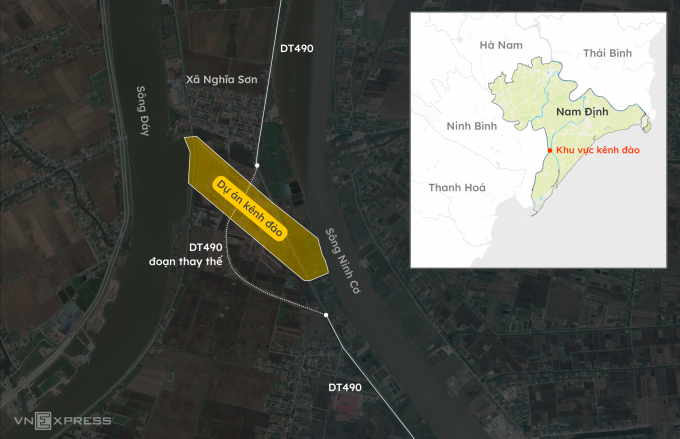
The project connects the northern coastal transport route with ports on the Day River, Nam Dinh and Ninh Binh areas through Lach Giang estuary, helping to shorten 20% of the travel time of watercraft from coastal provinces to Ninh Binh and vice versa. Graphics: Khanh Hoang
After more than a month of putting the canal into operation, Mr. Duong Thanh Hung said that the efficiency of the project is even higher than previously calculated. On the second day of allowing ships to pass through, a 3,000-ton ship carrying cement passed through the canal to Khanh Hoa and Quang Nam.
Previously, cement had to be transported to Hai Phong, then transported by small ships to the sea, then lifted onto larger ships to continue. But now, ships carrying cement, clinker, wood chips, coal, etc. do not have to follow this route, so a lot of costs are saved, and with ships, time is saved by 10 hours. Currently, there are more than 40 large and small ships passing through the canal every day.
In addition to cutting costs for ship owners, the canal also contributes to green transportation. According to calculations, a 3,000-ton ship, when fully loaded, is equivalent to about 70 container trucks, the amount of fuel to transport one ton of goods by water is only about 40% of that by road, the cost is about 70%, while solving traffic safety issues and reducing emissions.
Mr. Duong Thanh Hung said that in the future, when funding is available, another similar canal will be built parallel to the current canal. At that time, one lock will be used for ships to exit and the other for ships to enter.
Viet An
Source link


![[Photo] President Luong Cuong receives Kenyan Defense Minister Soipan Tuya](https://vstatic.vietnam.vn/vietnam/resource/IMAGE/2025/4/17/0e7a5185e8144d73af91e67e03567f41)
![[Photo] Welcoming ceremony for Chinese Defense Minister and delegation for friendship exchange](https://vstatic.vietnam.vn/vietnam/resource/IMAGE/2025/4/17/fadd533046594e5cacbb28de4c4d5655)
![[Photo] General Secretary To Lam receives French Ambassador to Vietnam Olivier Brochet](https://vstatic.vietnam.vn/vietnam/resource/IMAGE/2025/4/17/49224f0f12e84b66a73b17eb251f7278)
![[Photo] Prime Minister Pham Minh Chinh and Ethiopian Prime Minister visit Tran Quoc Pagoda](https://vstatic.vietnam.vn/vietnam/resource/IMAGE/2025/4/17/18ba6e1e73f94a618f5b5e9c1bd364a8)
![[Photo] Warm meeting between the two First Ladies of the Prime Ministers of Vietnam and Ethiopia with visually impaired students of Nguyen Dinh Chieu School](https://vstatic.vietnam.vn/vietnam/resource/IMAGE/2025/4/17/b1a43ba73eb94fea89034e458154f7ae)
![[Photo] Promoting friendship, solidarity and cooperation between the armies and people of the two countries](https://vstatic.vietnam.vn/vietnam/resource/IMAGE/2025/4/17/0c4d087864f14092aed77252590b6bae)
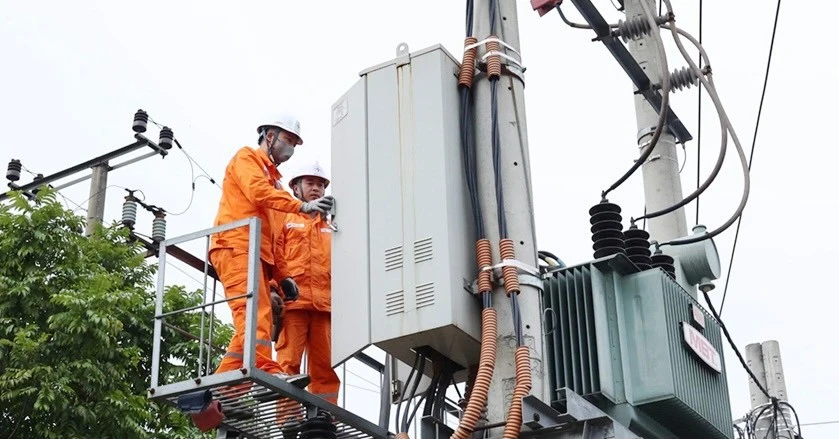



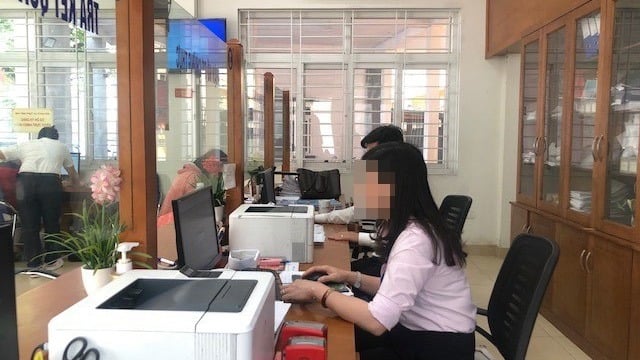










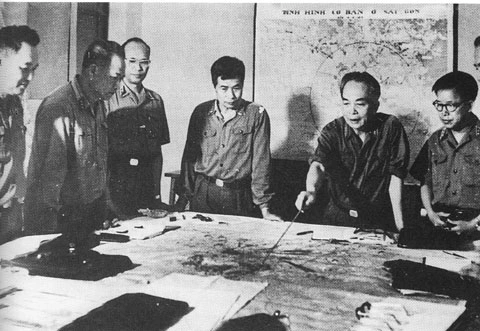


































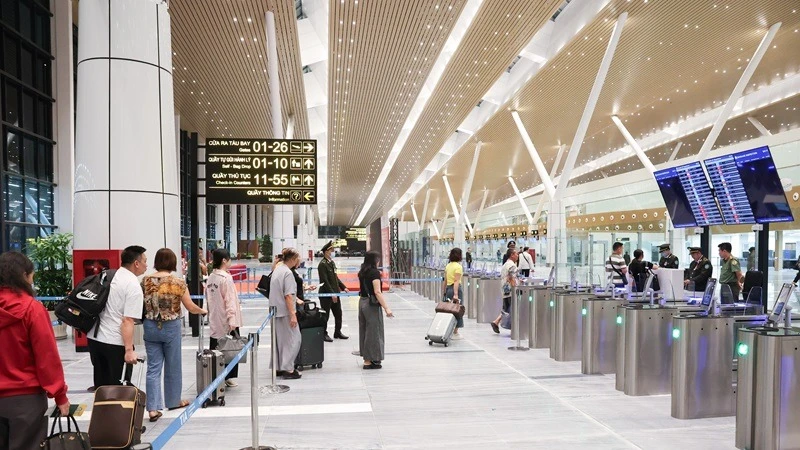


![[Video] Viettel officially puts into operation the largest submarine optical cable line in Vietnam](https://vstatic.vietnam.vn/vietnam/resource/IMAGE/2025/4/17/f19008c6010c4a538cc422cb791ca0a1)

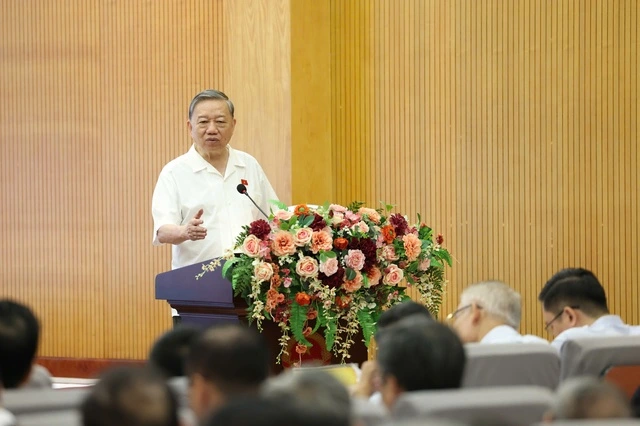





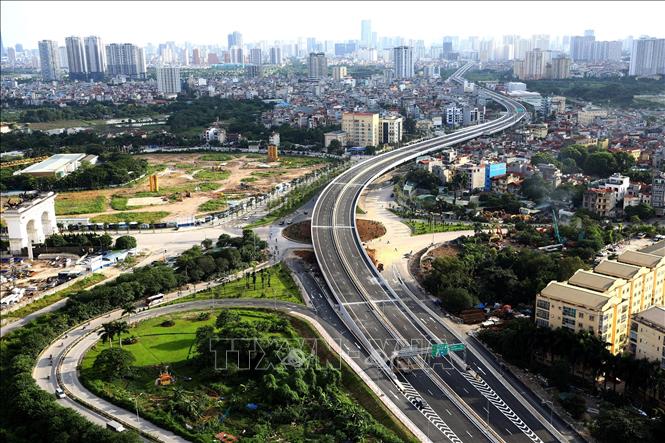





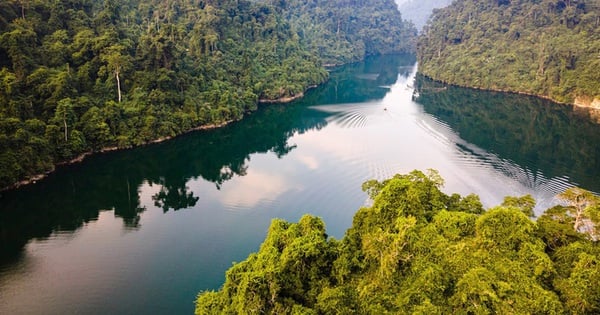


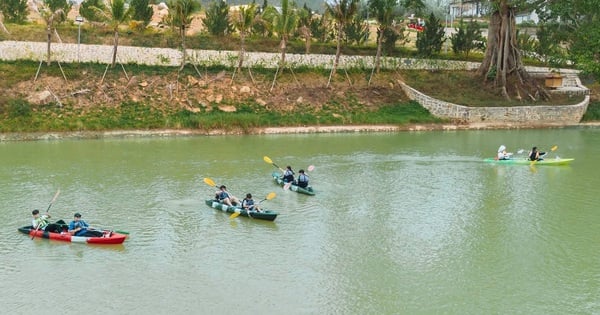


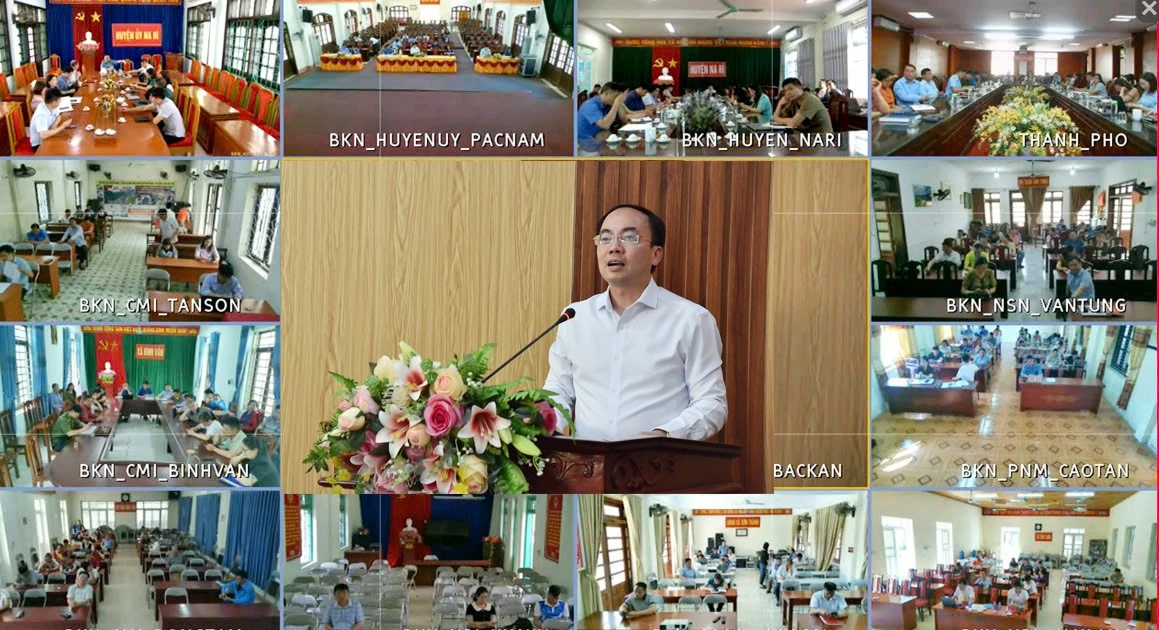






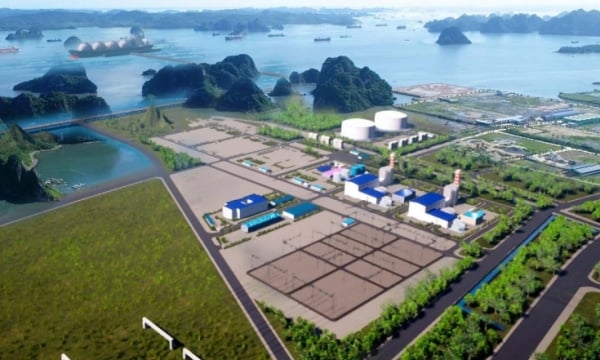





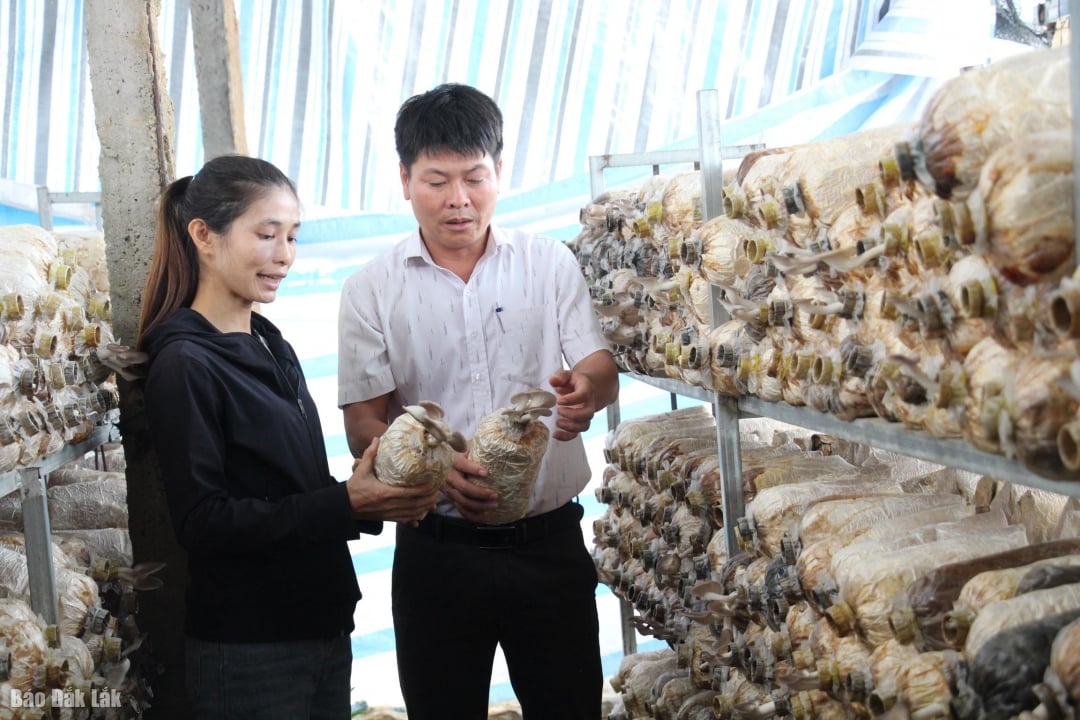

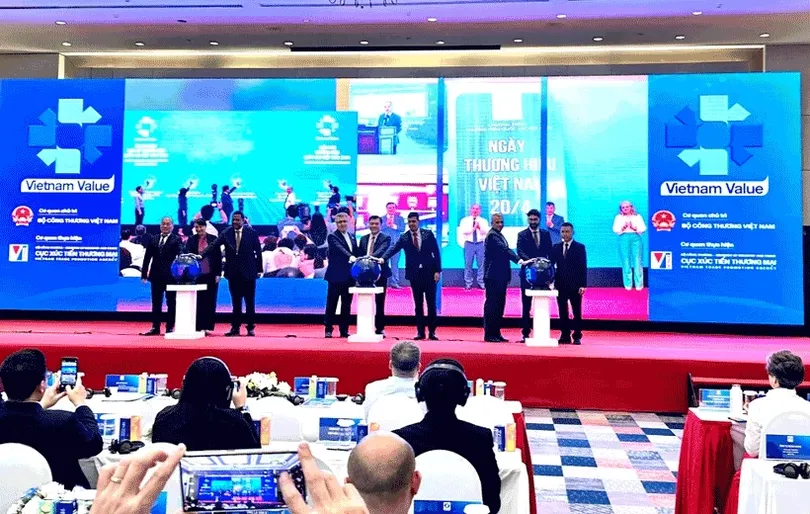





Comment (0)